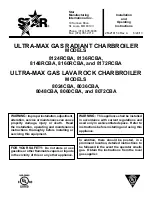
17
1-26
C
53
X
C
93
1-25
INS
TALLER
US
ER
MAINTEN
AN
CE TECHNI
CI
AN
1.1
7
DUCTING OF FLUES OR
TECHNICAL SLOTS.
Ducting is an operation through which, via
the introduction of one or more relevant pipes,
one achieves a system for the evacuation of the
combustion products of a gas appliance, made up
from the coupling of an existing or new ducting
pipe with a chimney, flue or technical slot (also
in new buildings) (Fig. 1-26). Ducting requires
ducts declared to be suitable for the purpose by
the manufacturer, following the installation and
user instructions, provided by the manufacturer
and the requirements of the standards in force.
Immergas ducting system.
The Ø 6
0
rigid and Ø
8
0
flexible “Green Range” ducting systems must
only be used for domestic use and with Immergas
condensing boilers.
In any case, ducting operations must respect
the provisions contained in the standard and in
current technical regulations; in particular, the
declaration of conformity must be compiled at
the end of work and on commissioning of the
ducted system. The instructions in the project
or technical report must likewise be followed, in
cases provided for by the standard and current
technical regulations. The system or components
of the system have a technical life complying with
current standards, provided that:
- it is used in average atmospheric and environ-
mental conditions, according to current regula-
tions (absence of fumes, dusts or gases that can
alter the normal thermophysical or chemical
conditions; existence of temperatures coming
within the standard range of daily variation,
etc.).
- Installation and maintenance must be per-
formed according to the indications supplied
by the manufacturer and in compliance with
the regulations in force.
- The maximum length specified by the manu-
facturer must be respected; in this regard:
- The max. possible length of the
Ø
60 flexible
ducting vertical section is equal to 22 m. This
length is obtained considering the complete
Ø
80 exhaust terminal, 1m of
Ø
80 pipe in
exhaust, two 90°
Ø
80 bends at boiler outlet.
- The max. possible length of the
Ø
80 flexi-
ble ducting vertical section is equal to 30
m. This length is obtained considering the
complete exhaust terminal, 1m of
Ø
80 pipe
in exhaust, two 90°
Ø
80 bends at boiler outlet
for connecting to the ducting system and two
direction changes of the flexible hose inside
the chimney/technical slot.
- The maximum possible length of the
Ø
80
rigid ducting vertical section is equal to 30
m. This length is obtained considering the
complete
Ø
80 exhaust terminal, 1m of
Ø
80
pipe in exhaust, two 90°
Ø
80 bends on the
boiler outlet.
1.18 CONFIGURATION TYPE B,
OPEN CHAMBER AND FORCED
DRAUGHT FOR INDOORS.
The appliance can be installed inside buildings
in
23
or B
53
mode; in this case, all technical rules
and national and local regulations in force, must
be complied with.
- type B open chamber boilers must not be
installed in places where commercial, artisan
or industrial activities take place, which use
products that may develop volatile vapours
or substances (e.g. acid vapours, glues, paints,
solvents, combustibles, etc.), as well as dusts
(e.g. dust deriving from the working of wood,
coal fines, cement, etc.), which may be harm-
ful for the components of the appliance and
jeopardise operation.
- in B
23
and B
53
configuration the boilers must not
be installed in bedrooms, bathrooms or bedsits,
unless otherwise provided for by local regula-
tions in force. They must neither be installed
in rooms containing solid fuel heat generators
nor in rooms communicating with said rooms.
- The installation of appliances in B
23
and B
53
configurations are only recommended in places
that are not lived in and which are permanently
ventilated.
The suitable kit referred to in paragraph 1.12
must be used for installation.
1.19 FLUE EXHAUST TO FLUE/CHIMNEY.
Flue exhaust does not necessarily have to be
connected to a branched type traditional flue.
The flue exhaust, for boiler clots installed in C
configuration, can be connected to a special
LAS type multiple flue. For B configurations,
exhaust is only allowed into individual chimney
or directly into the external atmosphere via a
suitable terminal, unless otherwise provided
for by local regulations in force. The multiple
flues and the combined flues must also only be
connected to type C appliances of the same type
(condensing), having nominal heat inputs that do
not differ by more than 30% less with respect to
the maximum that can be attached and powered
by the same fuel. The thermo-fluid dynamic
features (flue flow rate, % of carbon dioxide, %
humidity etc....) of the appliances attached to
the same multiple flues or combined flues, must
not differ by more than 10% with respect to the
average boiler attached. Multiple and combined
flues must be specially designed according to
the calculation method and requirements of the
technical standards in force, by a professionally
qualified company. Chimney or flue sections for
connection of the flue exhaust pipe must comply
with requisites of technical standards in force.
1.20 FLUES, CHIMNEYS, CHIMNEY POTS
AND TERMINALS.
The flues, chimneys and chimney pots for the
evacuation of combustion products must be in
compliance with applicable standards. Chimneys
and roof-installed exhaust terminals must com-
ply with the outlet height and with the distance
from technical volumes set forth by the technical
standards in force.
Positioning the wall
fl
ue exhaust terminals.
The
wall flue exhaust terminals must:
- be installed on external perimeter walls of the
building;
- be positioned according to the minimum dis-
tances specified in current technical standards.
Summary of Contents for Victrix Maior 28 TT 1 ErP
Page 1: ...VICTRIX MAIOR 28 35 TT 1 ERP IE Instruction and recommendation booklet 1 038659ENG...
Page 2: ......
Page 49: ...49...
Page 50: ...50...
Page 51: ...51...
















































